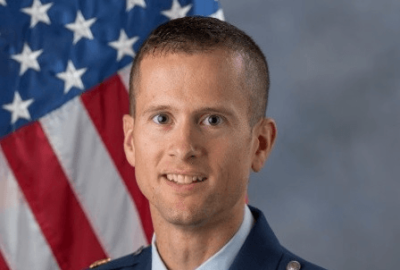
GSA, DoD kick off first test with new streamlined acquisition approach
The Homeland Security Department and the General Services Administration released details about program and policies that outline the future of major acquisition...
The federal fiscal fourth quarter isn’t just a busy time for releasing solicitations and submitting bids, but agencies are addressing several policy and programmatic questions, particularly over the last month or so.
The Federal Acquisition Regulations Council made it easier to buy as the fourth quarter spending spree approaches.
The General Services Administration launched its Commercial Solutions Opening pilot and told industry and federal customers to get their plane tickets to Austin, Texas for the IT Acquisition Summit.
The Homeland Security Department made its plans known for the next generation of the FirstSource multiple-award contract, while the Customs and Border Protection directorate issued a request for information for a cloud-broker approach to services.
Since about one-third of all federal acquisition spending happens in the fourth quarter and with the 35-day government shutdown making this year even busier, let’s start with the FAR rule.
The regulation, published and effective as of June 5, makes it easier for agencies to spend their money with GSA. It removes the requirement for agencies to justify the best procurement approach if they are using GSA schedules or governmentwide acquisition contracts.
The final rule also lets agencies use GSA’s assisted acquisition services without the need to validate their approach.
GSA said the rule change lessens the burden on its customers because they can now identify and quickly use GSA IT Category contracts especially as they begin the end-of-year IT spending rush.
Not OTA, but CSO
And speaking of GSA, its Federal Systems Integration and Management Center (FEDSIM) announced it will begin testing the CSO concept where they will acquire “innovative, commercial items, technologies and services currently in the production/commercialization phase as well as adaptations of existing commercial products.”
The goal of the CSO approach is to streamline the acquisition process and simplify contract terms to attract start-up companies and others who have not previously worked with government. It’s not quite the same at an Other Transaction Authority/Agreements (OTA), but focuses on a similar objective.
FEDSIM posted the first solicitation earlier this month for the Defense Department’s Joint Artificial Intelligence Center (JAIC) for its Humanitarian Assistance and Disaster Relief (HADR) National Mission Initiative (NMI).
“The JAIC requires an innovative commercial software and services solution that will provide comprehensive data management, end-to-end platform integration, and model/capabilities development of still imagery and computer vision solutions for locating flood affected areas and infrastructure; ultimately identifying at-risk, in-need, and/or harmed/damaged people/infrastructure,” the CSO solicitation states.
JAIC said the commercial system would include 10 characteristics or capabilities, including models to distinguish features like flood lines or dangerous structures, pre-processing, post-processing and integration algorithms necessary to run models as a cohesive, deployable and efficient capability, and integration with new and existing systems.
Responses were due July 22.
FEDSIM says it will post other solicitations for a specific project or technical area of interest when an opportunity is open.
FEDSIM joins the Defense Innovation Unit, the Defense Intelligence Agency, Naval Sea Systems Command, Army Materiel Command and the Department of Homeland Security as having launched their own CSO programs, according to Bloomberg Government.
Congress gave GSA the CSO pilot authority in the 2017 National Defense Authorization Act.
Unique identifier final rule
In another final rule in the Federal Register, GSA announced the move to a new Unique Entity ID for federal awards management is final, as are the technical specification for the identifier standard.
GSA will be holding a public meeting on July 25 to discuss the changes.
“[T]he U.S. government is moving to a new unique entity identifier for federal awards management, including, but not limited to, contracts, grants and cooperative agreements, which will ultimately become the primary key to identify entities throughout the federal awarding lifecycle, in SAM.gov, other IAE systems, on required forms, and in downstream government systems. The DUNS will be phased out as the entity identifier for entity record within SAM,” GSA states in the notice. “Through December 2020, IAE systems will be transitioning from the DUNS to a SAM-generated Unique Entity ID (UEI). The standard for the new UEI was developed by an interagency working group. This new entity identifier will be the authoritative identifier once the transition is complete.”
CSO, the new FAR rules and many other topics will be discussed in great detail at GSA’s first IT Acquisition Summit in Fort Worth, Texas in early August.
“This ‘Texas Two Step’ event showcases the latest in IT and telecommunications focused on cybersecurity, cloud, mobility and emerging technology,” GSA writes in a notice on FedBizOpps.gov. “Learn how to tap into best-in-class contracts, gain practical insight with real world cases and more.”
Beyond GSA, DHS also shed some light on major programs.
It released its plan for its next generational IT products and services contract. DHS decided to move to version three of the First Source IT products and services contract.
The agency’s Chief Procurement Officer Soraya Correa announced on FedBizOpps that First Source III will have set-aside tracks across each of the five socio-economic categories. It also will include specific ordering flexibilities for DHS. Correa said her office is working with the Office of the Chief Information Officer and across the components to iron out the scope of First Source III and establish an estimated timeline.
CBP and the cloud
DHS has obligated more than $2.8 billion on First Source contracts since 2013.
The decision to keep First Source in-house is a little surprising. DHS recently decided not to fully renew its EAGLE IT services contract, deciding instead to move it under GSA. Many in the community expected DHS to do something similar with First Source.
But the fact that First Source is a popular way for DHS components to access qualified small businesses and given that the agency has received an “A” on the small business scorecard for 10 straight years probably played into the decision to keep First Source in house.
Over at CBP, there has been a lot of interest in its IT modernization plans for much of this year after the bureau joined other DHS components and GSA to hold a cloud industry day.
CBP released a RFI for a cloud broker to provide access to infrastructure, platform and software-as-a-service.
Deputy CIO Sonny Bhagowalia told me on Ask the CIO earlier this month that demand for IT services and cyber threats are driving CBP toward the cloud.
“Currently, our first and primary priority is keep the mission going now. We are definitely seeing huge increase in the need for bandwidth,” he said. “Network is an enabler to making sure computing, data and applications work. I’ve not seen that level of synergy that the network must support the mission because if it goes down, we have to bring it back up as soon as possible.”
Bhagowalia added CBP expects to issue several cloud-related acquisition efforts in the coming months.
Reponses to this new RFI are due Aug. 1.
Copyright © 2024 Federal News Network. All rights reserved. This website is not intended for users located within the European Economic Area.
Jason Miller is executive editor of Federal News Network and directs news coverage on the people, policy and programs of the federal government.
Follow @jmillerWFED
Related Stories

OTAs aren’t the only answer to satisfy DoD’s need for procurement speed
 Exclusive
Exclusive Air Force Taps GSA to Fast-Track Cloud Platform Buy
 Exclusive
Exclusive 




